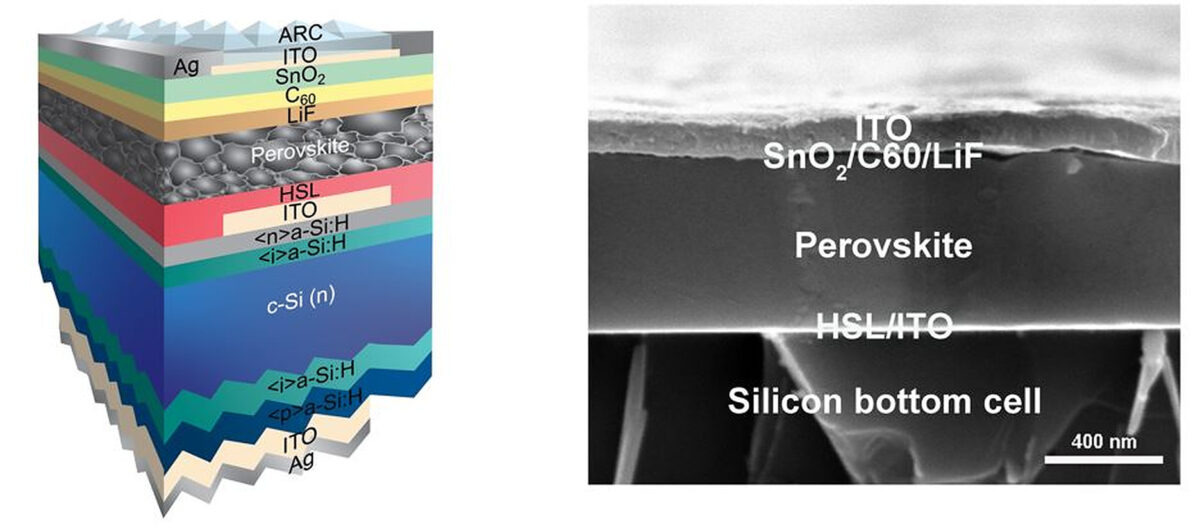An international research team has fabricated a perovskite solar cell with an energy bandgap of 1.67 eV, which is one of the highest bandgaps ever achieved for this kind of cell to date.
The device is intended for applications as a top cell in perovskite-silicon tandem solar devices, where the upper cells must have a high energy bandgap to achieve output current matching. These top cells, however, suffer from a higher bandgap-voltage offset, due to non-radiative recombination and energetic misalignment between the perovskite and charge-selective layers.
In order to solve this issue, the researchers utilized a self-assembled monolayer (SAM) based on carbazole, which acts as an effective hole-selective layer (HSL). These SAMs were previously utilized in experimental solar cells and are commonly developed through a molecular glue added during processing in order to dramatically improve adhesion between the light-absorbing perovskite layer and the electron transport layer.
“The SAM typically consists of an anchoring group, a spacer, and a terminal group,” the scientists explained, noting that their monolayer is also based on phosphonic acid (Ph-2PACz) and two benzene rings to create an extended conjugated system. “Carbazole-based SAM-HSLs have emerged due to their respectable stability and energy level alignment with perovskites, and they are ‘electron rich,' favoring hole selectivity.”
The top perovskite cell was made with an indium tin oxide (ITO) substrate, the SAM, a perovskite absorber, a buckminsterfullerene (C60) electron transport layer, a bathocuproine (BCP) buffer layer, and a copper (Cu) metal contact. It achieved a power conversion efficiency of 21.3%, an open-circuit voltage of 1.26 V, a short-circuit density of 20.5 mA/cm2, and a fill factor of 82.6%.
Popular content
“The bandgap-voltage offset at 0.41 V is one of the lowest for any 1.67 eV perovskite solar cells with a record efficiency,” the academics said.
The scientists decided then to use the top cell in a 1.03 cm2 monolithic perovskite-silicon tandem solar cell, and they found that the latter achieved a power conversion efficiency of 28.9% and an open-circuit voltage of 1.91 V. Some reference cells used based on other types of monolayers achieved efficiencies ranging from 25% to 26%.
“The Ph-2PACz-based tandem device showed enhanced damp-heat durability, producing negligible performance losses after 280 h of damp heat,” the group stated. “Notably, the encapsulated Ph-2PACz- based tandem device retained 98.8% of its initial efficiency after 200 thermal cycles, passing the IEC 61215 photovoltaic module standard.”
All the details about the cell technology can be found in the study “Molecular engineering of hole-selective layer for high band gap perovskites for highly efficient and stable perovskite-silicon tandem solar cells,” published in Joule. The research team was formed by scientists from the University of Sidney, German research center Forschungszentrum Jülich GmbH, the Southern University of Science and Technology in China, the University of New South Wales (UNSW) in Australia, and the University of Ljubljana of Slovenia.
This content is protected by copyright and may not be reused. If you want to cooperate with us and would like to reuse some of our content, please contact: editors@pv-magazine.com.



There’s a subtle omission here… does the perovskite contain lead (Pb) or not?